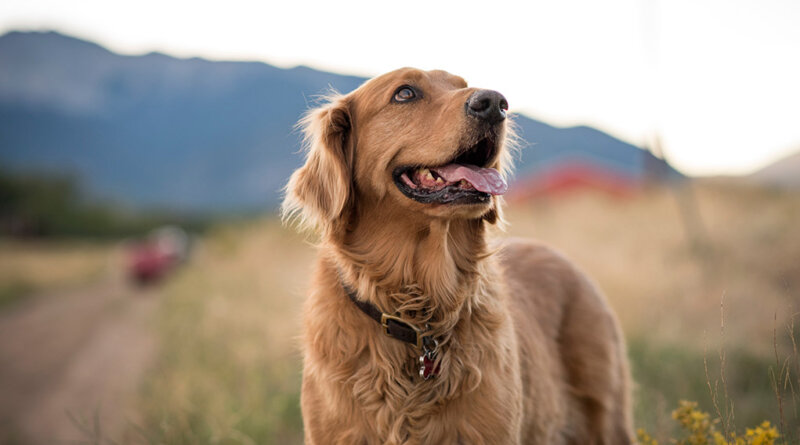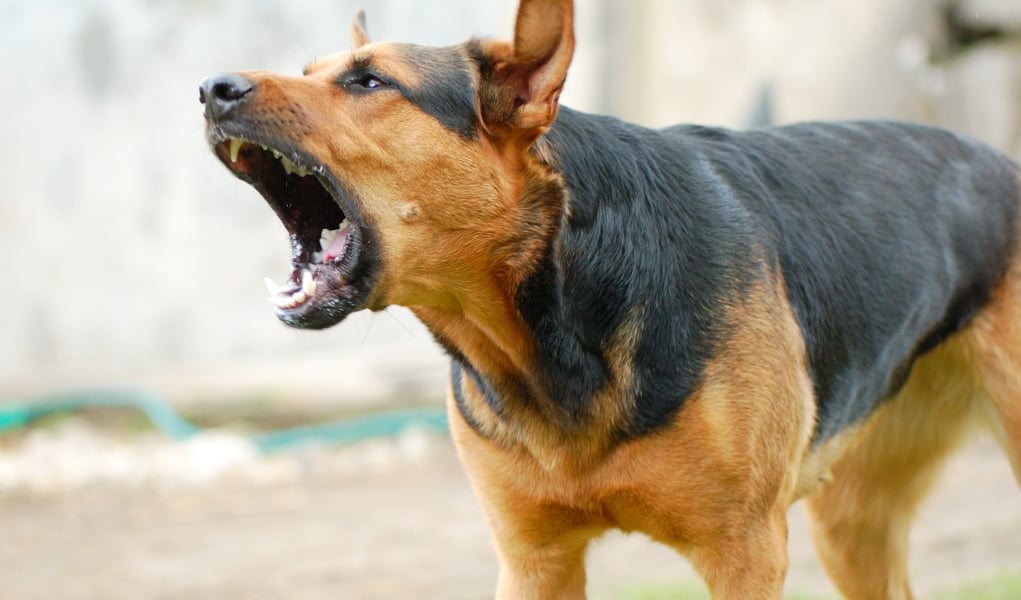Different Types of Dog Temperaments – Top Dog Tips
Dogs sprung from their wild dog ancestry. The closest similarity of each breed is that their domesticated and have been bred to work alongside humans.
Now, there are over hundreds of breeds worldwide, and they have different types of dog temperaments. Some are registered and some are recognized.
These canines may differ in physical attributes, mental attributes, purpose, needs, temperament and so much more. But today, we will be focused on different types of dog temperaments.
But before we discuss the different types of dog temperaments, let’s first figure out, what is temperament?
What is Dog Temperament?
Dog temperament is their general attitude and behavior regarding people, objects, and situations. Temperaments determine what kind of lifestyle, training, exercise, and living situations are best for a certain dog or breed.
Usually, temperament can be seen in general within a breed but of course, considering influences from the dam or sire or even members of the litter to their current living situation, a dog’s temperament can change.
Testing their temperament does not mean that it will determine if they are ‘good’ or ‘bad’ rather it shows what kind of lifestyle and owners are best matched with this pet.
Of course, every owner and every dog is built differently, but compromising is always a tune for harmony.
Figuring out the dog’s temperament is a way to visualize or practice a great bond between the god and the owner.
Temperament is not particularly permanent. Their personality can be influenced quite easily.
With exposure to different environments, living situations, people, time and so much more, a dog’s temperament can be modified even during adulthood.
It may take some time but it is something inevitable.
How to Asses Dog Temperament?
There are several temperament tests. Usually, they are given 7 – 8 weeks of age. Owners can inquire about this with professional dog trainers.
The American Kennel Club has a Temperament Test, which is used to evaluate a canine’s temperament and assess it with a much more concise understanding of them.
The test is exposing the dog to various stimuli. Their response to these stimuli will determine their result.
If a dog displays social interaction for their breed, cooperativeness, curiosity, emotional stability, and display of recovery in unfamiliar situations, the dog is likely best to have the desirable traits.
If the dog displays the opposite of the mentioned, it may not be suitable for just any situation or purpose.
The test includes:
- Social
- Auditory
- Visual
- Tactile
- Proprioceptive (motion)
- Unexpected stimulus
Set of Test
Temperament Testing a dog’s temperament usually begins when they are still a puppy. Although you can modify their behavior with training, there are some traits of a breed you’ll be able to see during this young stage.
There are a lot of tests to determine a dog’s temperament. Some are specified for a certain purpose. An example is a test for possible service dogs.
There’s also a test done especially by professionals, trainers, or owners who are looking for service or utility dogs. Professional trainers do certain tests to determine how puppies behave and react to given situations.
First Test
The first test includes placing the puppy in a room with people inside. Here, puppies are observed on how fast they interact with people or if they display anxiety or fear, or timidity.
Second Test
The second test involves mild restraint with the puppies. This is to check if the puppies are comfortable with being manipulated by their owner or a stranger.
If the puppy displays tolerance and comfort, they show good social skills and good adaptability skills.
Third Test
In the third test, the trainer measures their willingness to work. They start with food hidden under a hand, trainers measure how long they will pursue the food. This test can determine the level of their trainability.
Fourth Test
The fourth test consists of objects that may be intimidating or unfamiliar to the puppies. Using these objects, the trainers will observe how the puppies react upon seeing these objects for the first time and when it’s being used.
Their reactions to these unfamiliar or stressful situations will determine if they can work in different situations.
The trainers will check if they are curious about the object or situation, will they bark or react aggressively or observingly, and how long before they take cover if they will recover or avoid it completely.
The data collected will help determine a puppy’s temperament and with this professionals will discern whether the puppy is qualified to become a service or utility dog.
Position in the Pack
Considering the energy of the dog, the owner’s lifestyle, and the culture behind a breed, another simple way of assessing a puppy’s temperament is deciphering their positions in the pack.
This can be seen as early as they are born. Determining their position in the pack whether it’s in the front, middle or back can also be a way to figure out their temperament.
Front runners are usually calm and confident. Usually, front runners are the ones who have the alpha tendencies so it’s best to let these dogs know that their owner is the leader. They excel in utility, competition, and service jobs as well.
The middle ones are the happy-go-lucky kind of dogs. They have social butterfly tendencies. The middle ones are also best for new families big families or families with other pets.
They are best to be trained to set boundaries. They are the type to be eager with their owner’s attention so they can become demanding of this as well.
And the last ones are the sensitive ones. They are the type of dog that is more likely to be insecure and pick up separation anxiety. These dogs are best to be with.
It doesn’t mean they will stay the same. With proper introduction or exposure during their young age or even adulthood, they’ll be able to modify their temperament as time goes by.
Personality and Temperament Test in Shelters
Some shelters provide this test before putting a dog up for adoption. This test will also be matched by a test for the owners. The dogs and the owner must match well.
It’s best to know that they’ll be able to provide for the needs of the dogs.
Also, owners need to understand what temperament their dogs have. Determining what temperament their dogs have will help with the training, exercise, sociability, and lifestyle of the dog.
It’s best to research the certain breeds that owners would like to adopt. Getting a dog with a temperament and requirements that can not be understood and fulfilled can result in catastrophe for both parties.
Although others may not do this ahead, it’s never too late to try and figure out what temperament their dog has.
Knowing and understanding their dog’s temperament can help the relationship between dog and owner.
This can also be a guide to what lifestyle they most fit with.
Different Types of Dog Temperaments
Since we humans are quite different in terms of living, we adjust our daily regimen. That’s the same for dogs.
They have their breed temperament and modified ones as well. Let’s take a look at the common types of temperament in dogs:
Confident Dog
The first one on our list of different types of dog temperaments is ‘Dogs with Confident Temperaments’. These dogs are very positive and dauntless.
They are less likely to say no to new things. They can welcome maybe about everything with open paws.
These dogs take humans as their leaders well but once they deem it not adequate they may want to take over. These are mostly dogs with alpha tendencies.
They are dominant dogs. Confident dogs may take up the house with their unruly behavior if not corrected early and properly.
They do adapt well to their owners. If their owners display behavior and great leadership, they will unhesitantly follow. They best respond in discipline with positive reinforcement and compliments.
Timid Dog
Dogs who have a timid temperament are the introvert types of dogs. They are very shy around strangers, other dogs, and new objects or places.
This type of dog is very dependent on its owner before welcoming new stuff but once this something new gains their trust, they’ll be the sweetest with it.
They are the type to take time before they welcome these unfamiliar things. With the help of their owner, timid temperament dogs can progress more than they usually do. Timid dogs have a huge trust in their owners.
It will be hard for owners to introduce new things to these dogs but it’s not impossible.
With a positive and gentle approach, timid temperament dogs will adapt to these changes sooner or later.
Exposing them slowly to new things when they’re young is also a good start for these fur babies.
Independent Dog
Dogs with Independent Temperaments mean they are very free-spirited. These are the kinds of dogs that do not depend on help unless they’ve tried everything on their own.
They may rely less on their human counterpart. Independent dogs are the kind to appreciate their owner’s companionship at a distance as well.
They may glance from afar but they are reassured that they have a close connection with their owner.
Of course, the occasional pets and attention aren’t bad. It’s just that they’re not the type to crave and indulge in it.
These dogs are usually stubborn at times as well, so owners may find them hard to train.
But just because they’re independent doesn’t mean you should let them do what they want.
This Independent Temperament needs firm leaders as its owners. Basic training or training them to at least get back to you when called is a must.
Training and exercise are a way to strengthen the bond. They’ll appreciate your leadership and efforts and maybe just chilling at home is great for them. They are best with aloof owners as well.
Velcro Dog
These are dogs with dependent temperaments. Velcro Dogs have the likelihood of separation anxiety.
They are the type that can not be left alone. They are best to be with their family or owner most of the time.
If the owner or family is planning to leave, they are best to be dog sat by someone they know as well.
Velcro Dogs can be accompanied by another pet but they thrive on human interaction and attention. These dependent dogs will stay close to their owners most of the time.
They can be trained to ‘stay’ or be around others but once the presence of their owner is absent for a long time, they’re likely to feel more anxious over time.
Velcro Dogs may also have possessive and aggressive tendencies toward others. It’s best to train these Velcro dogs with exposure to other people and leave them for short amounts of time. Rewarding them and praising after is good too.
READ MORE: What is a Velcro Dog? Its Signs, Causes, and Solution
Laid Back Dog
Laid Back Temperamented Dog is the calmest of them all. They are the couch potatoes of the canine family.
They are also the gentle, welcoming, and sweet ones in the temperament types but there’s a catch.
Some may display this ‘want to sleep all day’ behavior but they still do need exercise and frequent socialization. So it’s not a good thing as well.
These dogs are the type to acquire weight gain and problems in the bone. Dogs who are not able to exercise may have health problems.
So it’s important to keep these couch potatoes moving. Troubling, not all dogs are up for the exercise.
Owners will need to make the exercise entertaining and stimulating for these fur babies to cooperate.
Aggressive Dog
Last on our different types of dog temperaments list are Aggressive Temperamented Dogs. These dogs are the hardest to handle.
Owners will need help and guidance from professional trainers or behaviorists to simmer down their aggression.
Usually, Aggressive Temperamented Dogs are the sensitive ones. They can sense tension from a human or dog quite too quickly.
The instinct to respond to it is okay but the time they respond and how they respond might be the problem.
They will bark and not hesitate to pursue contact with their target. So they are best trained before anything else. It’s also ideal to be a firm leader to these dogs.
Their mentality is quite quick and strict, with the help of their owner assessing their judgment, they will likely react less negatively and quickly.
These dogs are likely to have high prey drive or vigilant traits. Aggressive dogs are often found with hunting, guarding, or watchdogs but are not limited to it. They are likely to be bred with aggressive traits.
This kind of personality can be trimmed down with the help of strict and persistent training. If the owner shows earnestness and devotion in their dog’s training, results will reap what they sow.
Commonly Asked Questions About Dog Temperament
How to assess your dog’s temperament?
Owners can assess their dog’s temperament by conducting tests with professional trainers or behaviorists. The results may vary through age as well. Having them tested with intervals of years may conceive different results.
Will their temperament change or stay the same when they grow up?
Temperaments can change over the years, especially when the dog has switched home from their dam and sire. Growing up with different people, places, and surroundings can greatly affect a dog’s temperament.
The owner’s lifestyle and energy are also one of the biggest factors that can affect a dog’s change in temperament.
Depending on how the owner lives, treats, and spends time with the dog, their attitude and behavior will change accordingly,
What is the best temperament for dogs?
There’s no best temperament in dogs. They differ in purpose, breed, and requirements. They are also bred for specific reasons that are convenient for humans as well. So, to say the ‘best’ isn’t applicable.
Different Types of Dog Temperaments Summary
There is a temperament that can best match their owner’s lifestyle. If new owners are looking for a specific type of breed, they should do research and ask veterinarians or trainers if they will fit each other.
Just because breeds are in demand, that doesn’t mean they should obtain them. Dog breeds are unique, and they have different types of dog temperaments that may or may not be compatible with the dog owner.
As far as we can see, dogs have different personalities. They also have individualism regardless of their breed temperaments. Whatever they learn while they are in their owner’s care will reflect how they will be.
Dog temperaments are guides that humans can use with their pets to determine ways to bond or to make it better.
As owners, it is our responsibility to see that our pets are meeting not just their physical needs but also their mental needs as well.
If owners find any problems regarding their dog’s behavior, it’s best to seek professional help and guidance. Harmony between pet and owner is important.
Different personalities are dealt with differently. That goes the same with us, humans. And dogs don’t differ as well.
So hopefully, we will be responsible enough to research ahead before adopting.
READ NEXT: How to Choose a Dog Breed: Make the Best Choice
Related










